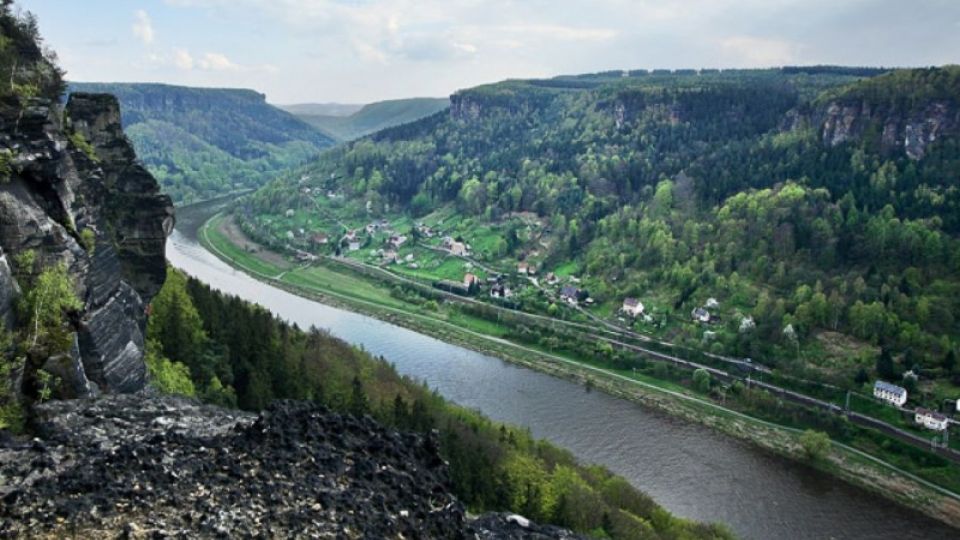Experts of the Arnika Association took samples of fish and sediments in river basins of two different rivers, and found alarming concentrations of toxic substances in the both of them. The both rivers, and, in particularly, the localities where the fish samples were taken, have one significant thing in common - the river Elbe in Ústí nad Labem, and the river Odra in Ostrava are burdened by industrial pollution in the long term. Fish samples from Elbe exceeded the European public health limit for polychlorinated biphenyls (PCBs) almost four-times. The same fish contained also dioxins in amounts exceeding limits. Thus, they were not fit for consumption. Concerning Odra, sediment samples were taken in Ostrava, and they contained increased concentrations of polycyclic aromatic hydrocarbons (PAHs). These results supplement conclusions of a related study, published by Arnika in the end of the last year. The study drew attention to alarming environmental quality of Elbe and Bílina, as a consequence of industrial activities.
„Chemical analyses confirmed that toxic substances found in suspended load and in sediments in Labe and Bílina in the last year entered the fish, too. Breams caught in Elbe downstream of the Střekov lock in the end of the last year contained the third highest dioxin concentration found in the Czech Republic in the last fifteen years. Simultaneously, concentration of polychlorinated biphenyls exceeded the European public health limit for their contents in fresh-water fish 3.8-times. Thus, the fish should not be consumed at all, from the point of view of health protection," explains the results Mgr. Jitka Straková, Arnika's expert on toxic substances.
PCBs and dioxins are hardly decomposable substances that do not occur commonly in nature, and persist in the environment for a very long time. In view of their ability to accumulate in the human organism, and in animals generally, and to cause a number of serious health problems, the Stockholm Convention aims to eliminate them from industrial processes, and, partially, also from the environment. Long-term activities of Arnika include putting through consistent compliance with the Convention principles, in particular concerning waste and decontamination of contaminated sites, including the ones contaminated a long time ago.
In the tissues of chubs and perches caught in the river Odra in Ostrava, polycyclic aromatic hydrocarbons were found. These results are in accordance with analyses of river sediments showing that PAHs concentrations in sediments downstream of the confluence of the Černý creek and Odra exceed legislative criteria for application to agricultural soils. Thus, the dredged sediments definitely cannot be used, for example, as a fertilizer. In the case that the sediment became waste, it could not be used even as the top layer of a landfill. A potential source of PAHs in the Černý creek and Odra is the industrial zone in Ostrava-Přívoz, where a coking plant was operated in the past.
„The World Health Organization (WHO) expresses toxicity of substances from the group of dioxins and polychlorinated biphenyls (PCBs) by means of the so-called toxic coefficient. The resulting values are expressed as a toxic equivalent, and enable comparing toxic effects of samples showing different composition of the individual members of the dioxin and PCB groups. According to the European Union legislation, marketed fish should not contain more than 3.5 nanograms of dioxins per a kilogram of muscle (ng/kg), and more than 6.5 ng/kg of dioxins and dioxin-like PCBs, expressed just by the toxic equivalent. In the fish sample from Elbe, the first value is 4.8 ng WHO-TEQ/kg of fish muscle, and the second one 15.6 ng WHO-TEQ/kg of muscle. Thus, our samples exceeded the limit concentrations of these toxic substances for marketing fresh-water fish concerning the both above-mentioned parameters, and, because of that, fishermen should avoid their consumption", explains the study author, Václav Mach.
In total, the Arnika's experts analysed fifteen mixed samples of river sediments, and four mixed samples of fish from various localities in the Czech Republic, with the aim to obtain data on burden of river ecosystems by the so-called persistent organic pollutants. The sampling sites were located in five areas, intentionally selected in the vicinity of potential contamination sources. The wide spectrum of analysed substances included polychlorinated biphenyls, dioxins, polycyclic aromatic hydrocarbons, perfluorinated compounds, and brominated flame retardants. „The river basin of Elbe in Ústí nad Labem is the most polluted one of the areas of interest. The fish sample from this locality exceeded public health standards for foodstuffs concerning the contents of dioxins and PCBs, and, from the point of view of water ecosystem pollution, it exceeded also limits for perluorinated substances and brominated flame retardants," concludes Jitka Straková.
The purpose of the monitoring and the study was, in particular, to increase awareness on pollution of Czech watercourses by hazardous persistent organic pollutants. The sampling and sample analyses formed part of the project Living Water, through which the Arnika Association intends to bring public attention to importance of protection of water, and of water ecosystems. Publication of the study results was the culmination of the project. In addition to monitoring of environmental conditions of rivers, Arnika focused also on educational activities within the framework of the project. „We involved children from elementary and secondary schools in water protection in a playful form, by means of an interactive competition, with participation of almost fifty elementary and secondary schools. In my opinion, education concerning water protection among children should form part of school education nowadays, when clean water is becoming scarce even on the global level," adds Kamil Repeš, head of the project Living Water.
Six secondary schools and one elementary school participated in the competition in the Region of Ústí nad Labem. In total, the team of the Roudnice Grammar School was on the excellent fourth place.
Supported by a grant from Iceland, Lichtenstein, and Norway, within the framework of the EEA.








